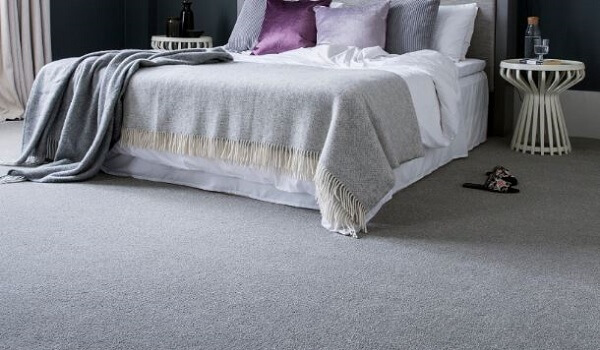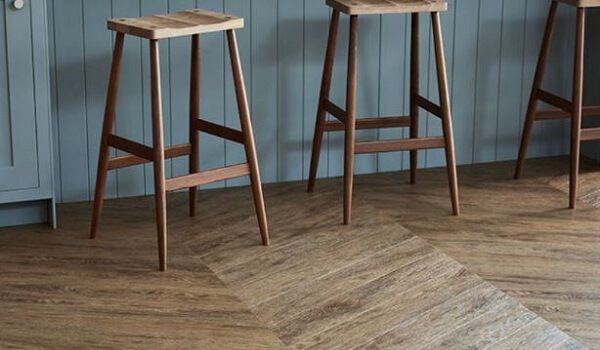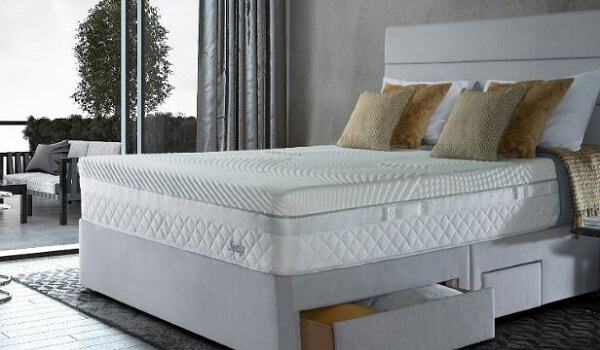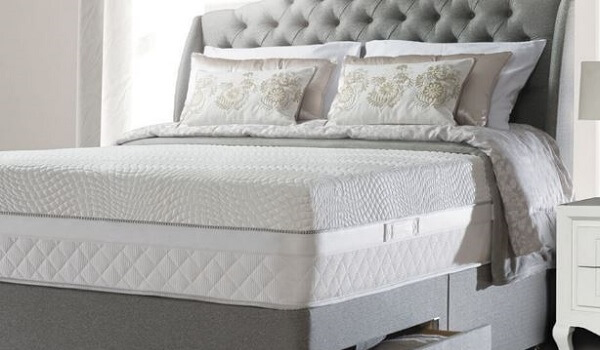Published on 22 May 2025
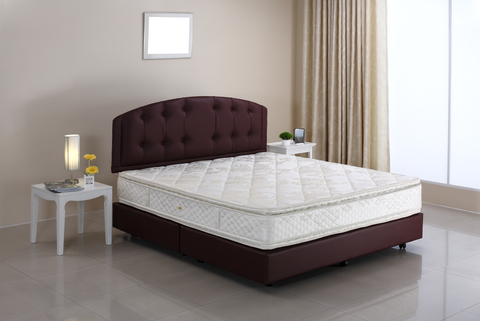
A good night’s sleep is not just a luxury—it’s a necessity for physical health, mental clarity, and emotional well-being. Yet, many people overlook the vital role that the bed frame and mattress play in achieving restorative sleep. If you wake up with back pain, stiffness, or fatigue, it might be time to reassess your sleeping setup. Although it’s difficult to pinpoint an exact figure, it’s likely that many people in the UK are sleeping on mattresses that don’t properly suit their personal needs and preferences, which could negatively affect their sleep quality and overall health. In this comprehensive UK guide, we’ll break down how to choose the right bed frame and how to choose the right mattress for you, including expert advice, health insights, and practical tips.
Why Your Bed Frame and Mattress Matter
The relationship between your bed frame and mattress is synergistic. A poor-quality bed frame can undermine even the best type of mattress, and vice versa. When selected carefully, the two work together to ensure:
- Spinal alignment and orthopaedic support
- Reduced pressure on joints and muscles
- Improved circulation and posture
- Undisturbed, quality sleep
Whether you’re a side sleeper, back sleeper, or stomach sleeper, choosing the right components is essential.
Part 1: How to Choose the Right Bed Frame
1.1 Types of Bed Frames
There are several types of bed frames available in the UK market, each offering different benefits:
- Divan Beds: Upholstered bases that often come with storage drawers. A great option for small bedrooms needing extra storage space.
- Platform Beds: Simple, modern frames with a solid surface. Often low-profile and suitable for memory foam mattresses.
- Slatted Frames: Feature wooden slats to support the mattress. Better for temperature regulation and airflow.
- Ottoman Beds: Lift-up frames providing vast under-bed storage. Ideal for compact spaces.
- Metal Bed Frames: Durable and often stylish, though some may be noisy over time.
1.2 Size and Compatibility
- Ensure the frame matches your mattress size—double, king, super king, etc.
- Check compatibility with your mattress type (e.g., slats vs solid base can affect memory foam mattresses’ performance).
1.3 Practical Considerations
- Storage Space: If you lack wardrobe space, a divan or ottoman is a smart choice.
- Room Size: A massive, king-sized bed might be luxurious, but not if it overwhelms your room.
- Noise & Stability: Look for sturdy frames with minimal creak or wobble.
2: How to Choose the Right Mattress
2.1 Know Your Sleep Style
Understanding your sleep position is crucial when deciding how to choose the right mattress:
- Side Sleeper: Needs pressure relief at shoulders and hips. A medium-firm mattress or hybrid mattress is ideal.
- Back Sleeper: Benefits from firm support to maintain spinal alignment.
- Front Sleeper: Requires a slightly firmer mattress to prevent the spine from arching.
2.2 Types of Mattresses
Choosing the best type of mattress depends on personal preference, body type, and sleep concerns:
- Memory Foam Mattresses: Great for contouring and pressure relief. Excellent for side sleepers and those with joint pain.
- Firm Mattresses: Ideal for heavier individuals or back sleepers who need solid support.
- Medium Firm Mattress: A balanced option, suitable for most sleep positions.
- Pocket Sprung Mattress: Individual springs wrapped in fabric. Offers targeted support and motion isolation.
Hybrid Mattresses: Combine foam and springs—e.g., the Simba Hybrid—to offer the best of both worlds.
2.3 Consider Additional Factors
- Temperature Regulation: Choose breathable materials if you tend to overheat.
- Edge Support: Important if you share the bed or need ease of getting in/out.
- Mattress Protector: A must-have for hygiene, allergy protection, and mattress longevity.
3. The Synergy Between Mattress and Bed Frame
When it comes to sleep quality and physical wellbeing, your mattress and bed frame must work in harmony. Many people focus solely on choosing the right mattress and overlook the importance of a compatible and supportive bed frame. However, the truth is that even the best mattress will underperform or wear out prematurely if paired with an unsuitable frame.
How Mismatched Components Affect Sleep
For example, placing a memory foam mattress on a flexible or widely spaced slatted frame can lead to sagging over time. Memory foam requires a stable and even surface to maintain its contouring and pressure-relieving properties. Without this support, the foam may compress unevenly, causing dips that misalign the spine and result in aches and poor posture.
Conversely, a firm mattress on a solid, non-flexible base—such as a hard wooden platform—may feel overly rigid, reducing the comfort layer’s effectiveness and creating pressure points. This can lead to disrupted sleep and increased stiffness upon waking, especially for lighter individuals or side sleepers.
Achieving Balanced Comfort and Support
To create the perfect sleep system, consider the following recommendations:
- Foam Mattresses (including memory foam and hybrid types): These perform best on sturdy, well-ventilated frames such as solid platforms or closely spaced slatted bases. Ventilation is key to preventing heat retention and moisture build-up, which can degrade the foam over time.
- Pocket Sprung Mattresses: These are more forgiving and generally more breathable. They pair well with slatted or platform bed bases that provide a moderate level of give, allowing the springs to flex and respond independently for tailored support.
- Hybrid Mattresses: Combining springs and foam, hybrid mattresses like the Simba Hybrid benefit from frames that balance firmness with breathability, typically platform or reinforced slatted bases with central support.
What to Look for in a Bed Frame
- Even Weight Distribution: The frame must support the mattress across its entire surface, not just the perimeter, to avoid pressure points and sagging.
- Central Support Bar: For double beds and above, a central support beam or leg is essential to prevent bowing in the middle over time.
- Minimal Movement: A well-built frame should offer minimal creaking, swaying, or shifting. This is especially important if you’re a light sleeper or share the bed.
Why It Matters
Getting both elements right—your bed frame and mattress—is crucial for orthopaedic and sleep health. Together, they promote:
- Proper spinal alignment throughout the night
- Pressure relief at key contact points like shoulders, hips, and lower back
- Improved circulation and reduced tossing and turning
- Long-term posture improvement and prevention of chronic pain
Neglecting one part of the equation can undermine the effectiveness of the other. A thoughtfully matched bed frame and mattress along with proper care for your mattress, is a vital combination that not only enhances sleep quality but also contributes significantly to your daily comfort, energy levels, and overall well-being.
Ready to Transform Your Sleep? Visit Potter’s Carpets and Beds Today!
At Potter’s Carpets and Beds, we understand that choosing the right bed frame and mattress is a personal journey—and we’re here to help every step of the way. Explore our wide range of stylish, supportive bed frames and discover our versatile, multi-purpose mattresses designed to suit every sleep style and space.
Not sure where to start? Try a FREE sample before you commit, so you can experience the comfort and support for yourself.
- Visit us in-store or browse online
- Have questions? Contact our sleep experts today—we’re happy to help!
Better sleep starts here. Choose Potter’s Carpets and Beds—the right choice for comfort, quality, and care.
Frequently Asked Questions (FAQs)
Q1: What is the best type of mattress for back pain?
A medium-firm or firm mattress, preferably a hybrid or memory foam design, is usually best for spinal alignment and pressure relief.
Q2: How often should I replace my mattress?
Every 7–10 years, or sooner if you notice sagging, discomfort, or changes in sleep quality.
Q3: Can any bed frame support a memory foam mattress?
Not all. Memory foam works best with solid or closely slatted frames. Avoid widely spaced slats, which can cause sagging.
Q4: Are divan beds a good option?
Yes, divan beds offer excellent support and storage. They’re a great option for UK homes with limited space.
Q5: Do I need a mattress protector?
Yes! It protects against allergens, spills, and wear and tear—extending the life of your mattress.

